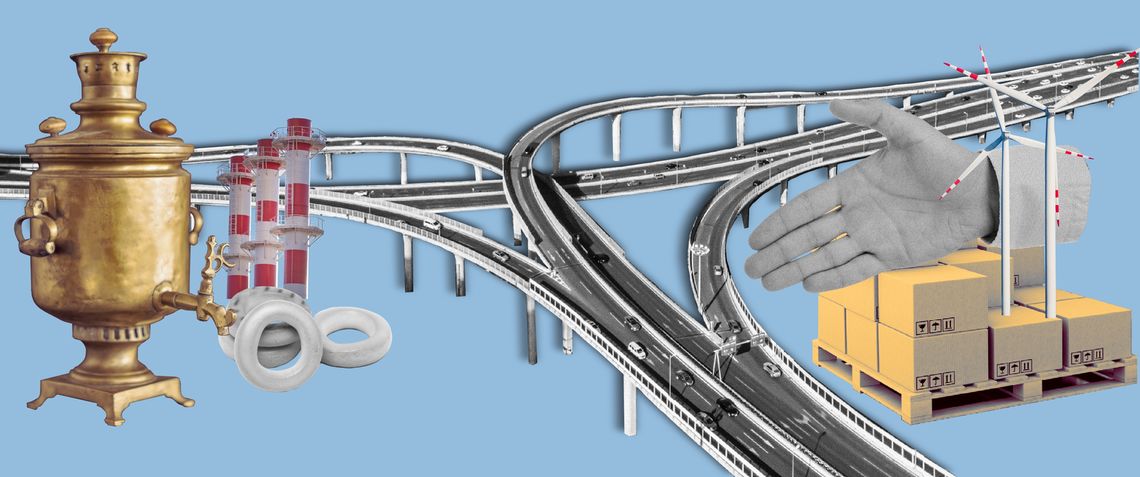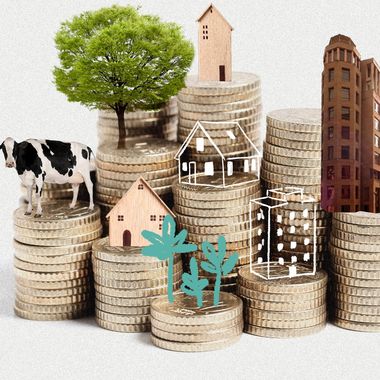
Illustration by Armine Shahbazyan.
Beginning from the 1990s, relations between the Republic of Armenia and the European Union have been based on the “Partnership and Cooperation Agreement between the Republic of Armenia and the European Union Communities and their Member States.” Both sides began preparing a new document, the Association Agreement (AA) that included the Deep and Comprehensive Free Trade Agreement (DCFTA), as early as 2010.
It is worth mentioning that Georgia, Moldova and Ukraine were also negotiating similar agreements with Brussels. Ukraine signed an Association Agreement with the EU after the 2013 Euromaidan movement and change in government. Armenia went in the other direction in a surprise 2013 announcement by President Serzh Sargsyan to join the then-new Eurasian Economic Union (EAEU). In the wake of the shift, Brussels and Yerevan initiated a second attempt and new negotiations began in 2015. As a result, the Comprehensive and Enhanced Partnership Agreement (CEPA) was signed in Brussels on November 24, 2017, within the framework of the Eastern Partnership Summit.
The Agreement began to be partially applied after June 1, 2018, and includes cooperation in areas such as trade in goods, transport, consumer protection, environment and energy.
A roadmap has been adopted to implement the Agreement, which included around 200 measures starting with legislative changes to the development of sectoral strategies.
The COVID-19 pandemic has greatly affected trade between Armenia and the EU. In particular, from January-December 2020, trade turnover decreased by 22.9% compared to the same period of 2019, from 1.6 trillion AMD to 1.3 trillion AMD. Exports to EU states from Armenia for January-December 2020 amounted to 429 million USD – a decrease of 25.9% (2019: 578.6 million USD). For comparison, overall exports from Armenia only decreased by 3.9%. In other words, exports to the EU reduced 6.6 times faster than to other countries.
Imports into the Republic of Armenia from EU countries, according to the country of origin, amounted to 847.5 million USD in 2020, down 21.4% from 2019 (1.1 billion USD). For comparison, total imports to Armenia have decreased by 17.7%. In other words, total imports from the EU to Armenia decreased slightly faster than from other countries in 2020.
In 2020, exports from Armenia to EU countries were mostly to Bulgaria, the Netherlands, Germany, Italy and Belgium. Armenian imports were mostly from Germany, Italy, France, Poland and Spain.
CEPA came into force in full on March 1, 2021, after ratification by all the EU member states. The other part of the Agreement, which covers the areas of education, health, information technology and workers’ rights, came into force following ratification. Within the frameworks of the developed roadmap, the Republic of Armenia has approximately eight years in which to bring the different areas of activity closer to EU standards. This refers particularly to the fields of energy, protection of the environment and transport.
It is worth mentioning that CEPA repeats numerous provisions of the prepared but never-signed Association Agreement between Armenia and the EU. However, the main difference is that the provisions for free trade with Europe are absent in the current agreement, because these would have created a contradiction with the norms applied within the framework of the Eurasian Economic Union.
The Association Agreement planned to provide additional privileges for Armenia’s entry into the European market. The agreement aimed to increase the efficiency of trade and investment in the economies of the parties – providing Armenia access to the European market with its 500 million consumers. As far as CEPA is concerned, the provisions referring to changes in customs tariff rates or the harmonization of technical regulations of goods are absent, taking into account the commitments undertaken by Armenia to the EAEU.
It is also necessary to point out that provisions related to visa liberalization were provided in the Association Agreement, whereas the new agreement does not provide visa liberalization, only visa facilitation. Visa liberalization suggests a gradual process but only if Armenia fulfils its obligations properly under the agreement.
At the same time, CEPA has virtually no changes from the Association Agreement in its political section, which covers provisions such as development of security, and the dominance of human rights, democracy and rule of law. One of the main goals of CEPA is increasing the component of Armenian participation in activities in European policies, programs and agencies.
The EU stresses the importance of democracy and the rule of law in its relations with other countries. In this context, CEPA, which includes commitment to fundamental freedoms, strengthening respect for human rights including the rights of minorities, democratic principles, rule of law and effective governance, is no exception.
It is expedient to mention that CEPA stipulates a provision whereby companies producing Armenian cognac will have to give up the alcoholic drink’s brand name in 22 years (by 2043). Therefore producers in this field must begin to consider rebranding in the coming years, in order not to lose their share of the market, taking into account that the creation of a brand and its promotion are quite costly, time-consuming processes.
According to the document, the word “cognac” brand is under EU protection as a French geographical name. The same applies for the “champagne” designation, which will be replaced by the term “sparkling wine.”
A working group has currently been set up, consisting of representatives of interested public administration bodies of the Republic of Armenia, which must create a new word in the near future to replace the word cognac. Moreover, the EU has provided funding for the process for only eight years after the signing of CEPA; in other words, only five years remain for the Armenian side to implement these changes within the framework of European support.
Beginning in 2032, Armenia will no longer be allowed to release a product called cognac, after which there will be a transition period until 2043 in order to clear stock. If the Armenian side has not correctly implemented the process of renaming by 2043, the EU has the right to apply to an arbitration tribunal to terminate the agreement.
Summarizing this section in CEPA, it is worth mentioning that the timeframe for its enactment coincided with a period not very beneficial for either side, as the COVID-19 pandemic and global economic crisis affected virtually all countries. Besides that, the defeat in the 44-day war in Artsakh and the ensuing political crisis in Armenia created conditions that were unfavorable for the initial process of the Agreement.
It is also worth touching on the tense relations between the Russian Federation and the EU, particularly taking into account the declaration by Sergei Lavrov, the Russian Minister of Foreign Affairs, concerning the possibility of severing all relations, after meeting with Josep Borrell, Vice-President of the European Commission and High Representative of the Union for Foreign Affairs and Security Policy.
It can be assumed that Armenia and Russia have opposing attitudes towards the European Union. Therefore, the fate of the CEPA agreement also depends on the attitude of the Russian Federation toward the latter, if it chooses to exercise the leverage it has over Armenia in the area of security.
If we refer to the analysis of trade and economic relations between Armenia and the EU, it is necessary to emphasize that the European Union is one of the key players in the reforms taking place in Armenia. The European Union almost doubled its grant funding during 2019-2020, to €65 million. Currently, the EU is supporting the government’s program of reforms in the development of the private sector, human capital and targeted areas. Besides that, over €1 billion has been invested since 2014 in energy, agriculture and transport, in the form of grant and loan programs.
The EU market represents one of the key directions for exports from Armenia and imports into Armenia, as well as one of the main sources of direct foreign investment into the country’s economy. Armenia has been using the EU Generalized Extended System of Preferences (GSP+) since 2009, within the framework of which, some 6,400 items of Armenian origin can be imported into the EU market at zero or reduced customs tax rates. Furthermore, the rate of using this system among Armenian companies has always been high, around 80-90%. Nevertheless, starting in 2022, Armenia will no longer be included in the list of beneficiaries of the EU GSP+ system.
It should be pointed out that the minimum criteria for country inclusion in the GSP+ system are the implementation of two preconditions. Firstly, the country must join 27 European conventions that cover various spheres from environmental protection to protection of consumers’ interests. Also, the country must be included in the GSP system, which unites low-income countries included in an annual EU report. The 2021 report was published in February. According to the published data, Armenia may be deprived of privileges due to an increase in the country’s income level.[1] According to the stipulated regulation, if a country has an above-average income level over three years, it is given a transition period of one more year, after which it is deprived of the opportunity of applying the preferential regime. Armenia has been considered an above-average income country since 2018. Consequently, 2021 will be a transitional year for the country before it is excluded from the preferential trade regime system in 2022.
The EU finances Armenian companies, enables their employees to receive relevant education, and also supports them in accessing new markets, including within the framework of the EU4Business initiative. As a result of €40 million in investments since 2009, it has been possible to ensure the provision of €450 million in loans and also the provision of additional financial aid. More than 25,000 SMEs have utilized these means and created more than 3,200 new jobs.
The European Union also supports the development of tourism in several regions of Armenia. As a result of these programs, 100 new jobs have been created and more than 300 SMEs have received support. In 2020, 30 tourism companies received assistance in the fight against the COVID-19 pandemic. More than 460 jobs have been created within the framework of the EU4Regions pilot program, and the competitiveness of about 700 companies has been increased. In addition, special assistance was given to 2,800 individuals in their search for employment.
As for cooperation in the energy and environmental spheres, it should be noted that the European Union is allocating funds to increase efficiency in the exchange and transit of energy between Armenia and Georgia. The Armenian-Georgian border checkpoints have been reconstructed, equipped with modern infrastructure, equipment and checkpoint management systems. The modernization of the Armenian-Iranian border checkpoint was carried out with the support of the EU, with the aim of boosting regional economic relations.
It should be noted that, within the framework of COVID-19 response activities, the EU has assisted Eastern Partnership countries in overcoming the needs in this area. As a result, the EU has raised more than €1 billion to support both the healthcare systems in these countries, as well as the socially vulnerable. Within the framework of these events, Armenia was provided with an assistance package worth €92 million. It includes direct budget funding of €65 million, as well as support for SMEs and initiatives developed by NGOs.
In conclusion, it can be stated that 2020 was a crisis year for Armenia-EU trade and economic relations, and 2021 does not look much different. As a member of the Eurasian Economic Union, Armenia must balance the opportunities and risks in two directions of integration, otherwise the benefits arising from the CEPA agreement will not be fully realized.
--------------------------
[1] Calculations are made using the World Bank’s Atlas method.
also read
Current Trends in Armenia’s Real Estate Market
By Suren Parsyan
Economist Suren Parsyan writes that due to the pandemic and the post-war situation, Armenia is witnessing a decline in purchasing power, a phenomenon that is having an impact on the real estate market.
Armenia’s Obstacles Within the Eurasian Economic Union
By Suren Parsyan
There are a number of obstacles and barriers within the internal market of the EAEU. If solved quickly and effectively, it can create opportunities for mutual trade to grow, making it a productive vehicle for regional integration.
The Eastern Partnership: From Security to Resilience
By Anna Barseghyan
The EU’s policy toward its neighbors has had several transformations, including a shift from a “one size fits all” approach to a “pick and choose” one. Anna Barseghyan explains.
Opening Borders: Armenia’s Economic Risks
By Astghik Karapetyan
The lifting of blockades is presented as a benefit for Armenia, but some business leaders doubt that the Government is prepared for accompanying risks to the Armenian economy.
Armenia in the Belt and Road Initiative
By Sofia Bergmann
China’s revolutionary and controversial Belt and Road Initiative, meant to link East and West, has dipped its toes into Armenia.
Property Tax Increases Expected to Reform an Obsolete Approach
By Astghik Karapetyan
Armenia’s parliament recently approved property tax increases that led to a wave of debate and blowback. Astghik Karapetyan explains how the reform is being implemented.
Legal Institutions for an Emerging Technology Economy
By Henry Nikogosyan
On the path to becoming a serious player in the global tech sector, Armenia needs to foster an environment that allows technology companies to achieve their business goals, which includes legal institutions to resolve complex disputes.










